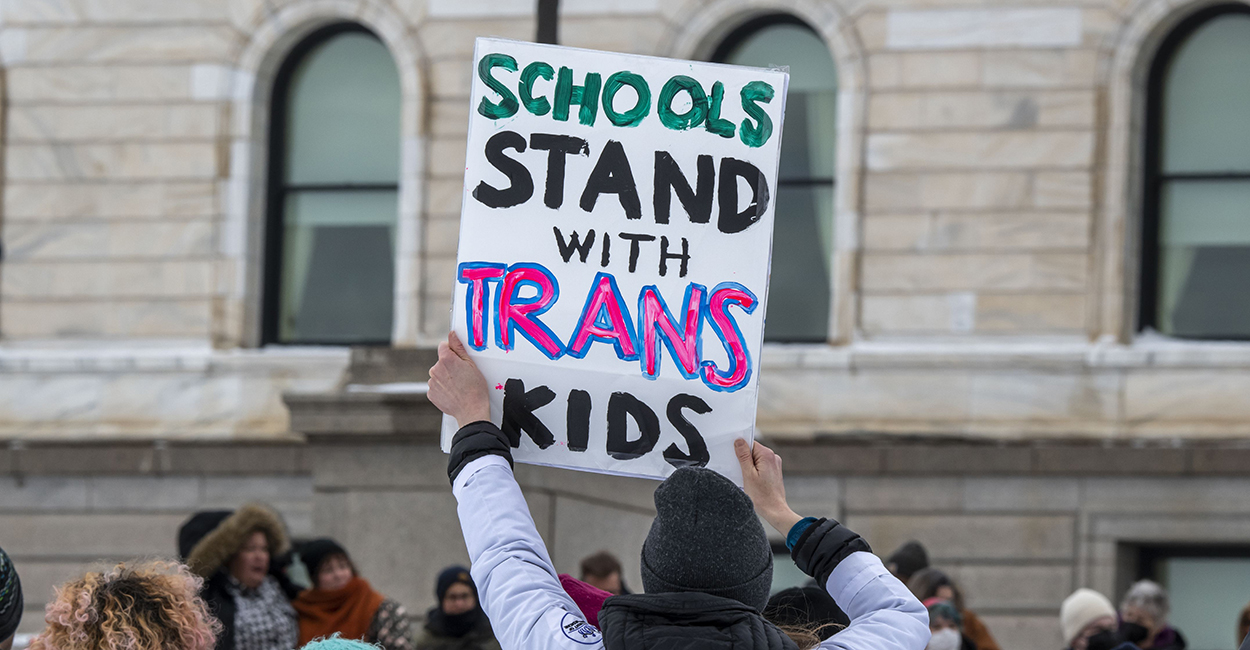Parents Out, Teachers In: Solving The Issue of Gender Dysphoria
"The way that I see it, the schools are triangulating the family -- they're becoming a wedge between the child and parent.""It's not a benign act. It's a psychological intervention -- and it's not a minor psychological intervention -- that teachers and counsellors are entering into without any psychological training at all."Mother of student and former academic with doctorate in psychology"School is an incredibly important part of this. School is a fundamental part of youth experience, growing up and becoming adults. They spend six, seven, eight hours a day at school. It's fundamental to their well-being.""The parents ultimately realize the child is the person they've always loved. With the parents' support, the child starts to go to school again, they come out of their room, they start talking with their parents and siblings.""They're having plans for their future they did not have before."Dr.Margaret Lawson, endocrinologist, head, Children's Hospital of Eastern Ontario gender identity clinic
 |
| Canadian schools accept name and pronoun preferences, provide gender-neutral washrooms and teach from a young age about gender identity. In some cases, they can even refer students directly to gender-treatment clinics. Photo by Getty Images |
"My real concern here is that people are using schools and the education system for decisions that should be made in the medical system."James Cantor, former scientist with Centre for Addiction and Mental Health, Toronto
Dr. Cantor is not comfortable with the intervention of schools and teachers' involvement in guiding children toward solutions to their gender confusion. To his professional sense, the role of the schools in ushering children toward transitioning makes it likelier for a young person to move on to medical transition, inclusive of cross-sex hormones and gender-reassignment surgery. In his new role in private practise as a psychologist he has become a prominent critic of the affirmative approach taken by school boards.
For her part, Dr. Lawson -- as head of a major children's hospital's gender identity clinic, co-founder of the TransYouthCan! research project -- points to what she sees as potential perils should schools not affirm new identities for their students. Her studies suggest that close to 40 percent of gender-dysphoria patients at Canadian clinics avoid school on occasion to avoid harassment. Supporting these children "is not pointing a child in a direction they wouldn't otherwise take. No one chooses to be transgender", she states.
According to some professionals in the field, there is good reason for schools to be involved in what is referred to as social transitioning; that otherwise these institutions of learning would represent exposure to harm to the well-being of their students. This, despite parents' legitimate and responsible concerns that their agency as parents and guides to their children's well-being is being usurped by those in the teaching profession who have taken it upon themselves to pattern their students in ways parents do not approve of, and without parental consent.
In the United States where a similar situation prevails, some Republican-led state governments have passed laws that bar transgender students from school washrooms or sports teams and discussion of gender identity is prohibited in classrooms. Moves that have been widely condemned as transphobic and politically motivated. 'Progressive' advocates tend to label questioning of the "affirmation" approach taken up by schools and the health-care system as anti-trans or representative of hate-speech.
Dr. Lawson points out that the number of young people reporting gender dysphoria has been "exponentially growing"; the majority of whom are adolescent girls. Whereas traditionally it has been very young, prepubescent boys or alternately middle-aged men most likely to identify themselves as trans. Professionals in the field tend to feel the transgender boom is now occurring lately based on growing social awareness and acceptance following years of intolerance and violence.
There are other explanations more popular with skeptics; that online influencers, social contagion and education in schools represent the prompting elements to convince confused or troubled teenagers in their decisions to choose gender-identity as the source of their troubled social status. Another of Dr. Lawson's studies disproves "conclusively" that "rapid-onset gender dysphoria" is a problem.
It seems, however, that the phenomenon is such that it has convinced jurisdictions such as the U.K.,
Sweden and Poland to back away from the affirmative approach over concerns that other mental health issues could be overlooked in the rush to address and advance gender identity. Britain's Cass Review recently released a report on gender-identity services for young people, claiming the decision to begin social transition should be carefully decided by "the young person, along with their family/carers".
Sweden and Poland to back away from the affirmative approach over concerns that other mental health issues could be overlooked in the rush to address and advance gender identity. Britain's Cass Review recently released a report on gender-identity services for young people, claiming the decision to begin social transition should be carefully decided by "the young person, along with their family/carers".

On the other hand, Canadian schools are instructed that parental involvement is not required in affirming a child's wish to transition socially. A background document put out by Public Health Agency of Canada instructs teachers and other school staff not to disclose a student's changing gender-identity to anyone -- "including parents/caregivers" -- who is not aware of the situation. The document reads: Disclosing a new gender identity "may signify the end point of a very long internal struggle to be secretive with their identity because of fear or shame".
Evidence indicates that social transitioning results in making it more likely for a young person to move on to medical transition which can include cross-sex hormones and gender reassignment surgery, which makes the involvement of schools as initiators in transitioning problematical. "It's a really new area that nobody really understands and I think the schools and everybody else is just saying 'Let's make this child happy, no matter what'", remarked the mother of a Toronto District School Board student whose child at birth was male and has come out now as a girl at the end of Grade 11.
Her school, including a summer-school teacher, without consulting the parents, immediately adopted the new name and pronouns. She also has a number of friends and acquaintances with children identifying as trans, said the mother, wishing the school required parents to at least sign off on gender-related name changes, offering opportunity for discussions to families.
In north-central Ontario, a father explained he simply accepted the situation when his transitioning daughter's school adopted her new male name. However, when she was assigned to a hotel room with three boys during an out-of-town trip, even his child was uncomfortable. She has since reverted to her birth-gender identity.
In Ottawa, a mother took a local school to the Ontario Human Rights Tribunal when her daughter's Grade 1 teacher suggested to the class that no difference existed between boys and girls during a lesson on gender fluidity. This left her child confused and upset, and the mother reacted as any mother would under normal circumstances. As it happened, the tribunal ruled in favour of the school.
 |
| Schools are promoting transgender ideology in the classroom and “socially transitioning” confused children with official “gender support plans” while keeping parents in the dark. Pictured: People rally at the state capitol in St. Paul, Minnesota, to support transgendering for children, March 6, 2022. (Photo: Michael Siluk, UCG/Universal Images Group/Getty Images) |
Labels: Gender Dysphoria, Health Authorities, School Boards, Transitioning Kids

0 Comments:
Post a Comment
<< Home